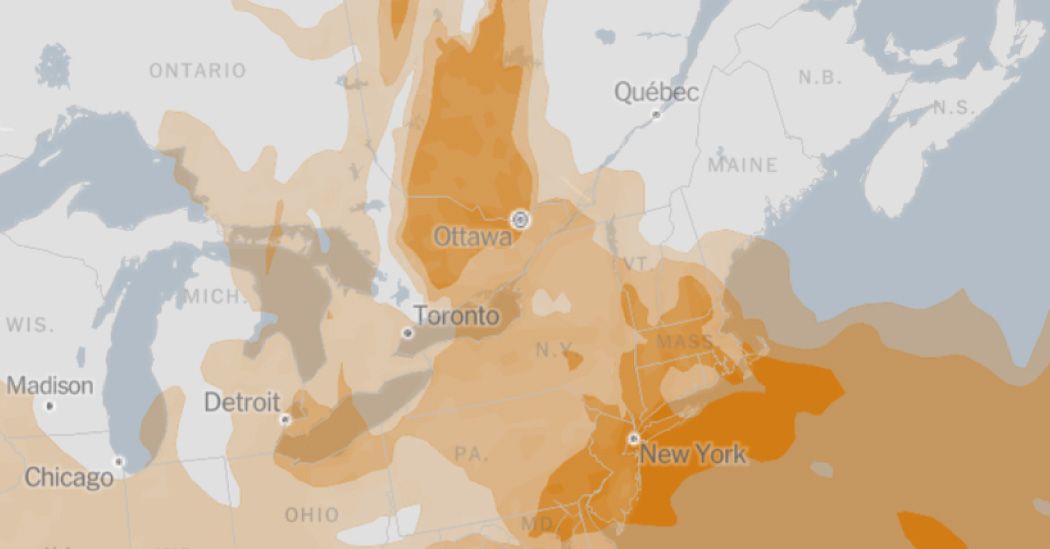Maps: Tracking Smoke From Canadian Fires
Latest 8-hour smoke forecast Light Moderate High Source: National Oceanic and Atmospheric Administration By Madison Dong and Bea Malsky
Smoke and haze continued to fill the skies across the Northeast on Wednesday, as wildfires burning hundreds of miles away in Canada made the air unhealthy in New York City, Washington and elsewhere.
The forecast computer model in the map above shows where the thickest smoke is likely to be near the earth’s surface over the next several hours.
Roughly 150 fires were active in Quebec alone, according to the Canadian Interagency Forest Fire Centre. Many of these fires started days ago, if not weeks. But a storm system swirling off the coast of Nova Scotia in recent days forced the smoke from these fires south into the United States, and then east — toward some of the most densely populated areas in the country.
The weather pattern is expected to persist for the next several days, with haze likely to continue across the region.
A satellite image captured on Tuesday showed a large storm system in the right hand corner as fires burned, sending reddish-brown clouds of smoke across Canada and the United States. National Oceanic and Atmospheric Administration
The level of particulate matter in the air from smoke on Wednesday was considered unhealthy from Detroit to Philadelphia, according to AirNow, a source for air quality data.
Many of the fires in Quebec were ignited by lightning earlier this month, but above-normal temperatures and dry conditions have helped fuel outbreaks across the country since May.
Tracking wildfires in Canada Burned area Recent fire hotspots Source: Canadian Wildland Fire Information System By Martín González Gómez and Madison Dong
Fire season in Quebec and Canada usually starts in May, slightly before the typical start of fire activity in the United States. As of Tuesday, there were more than 400 fires actively burning throughout Canada, the country’s interagency fire center said, with 240 of them burning out of control.
So far there have been few major U.S. fire outbreaks. But as blazes in recent years have been erupting more frequently, the fire season has lasted longer and has been more destructive.
Source: The New York Times


